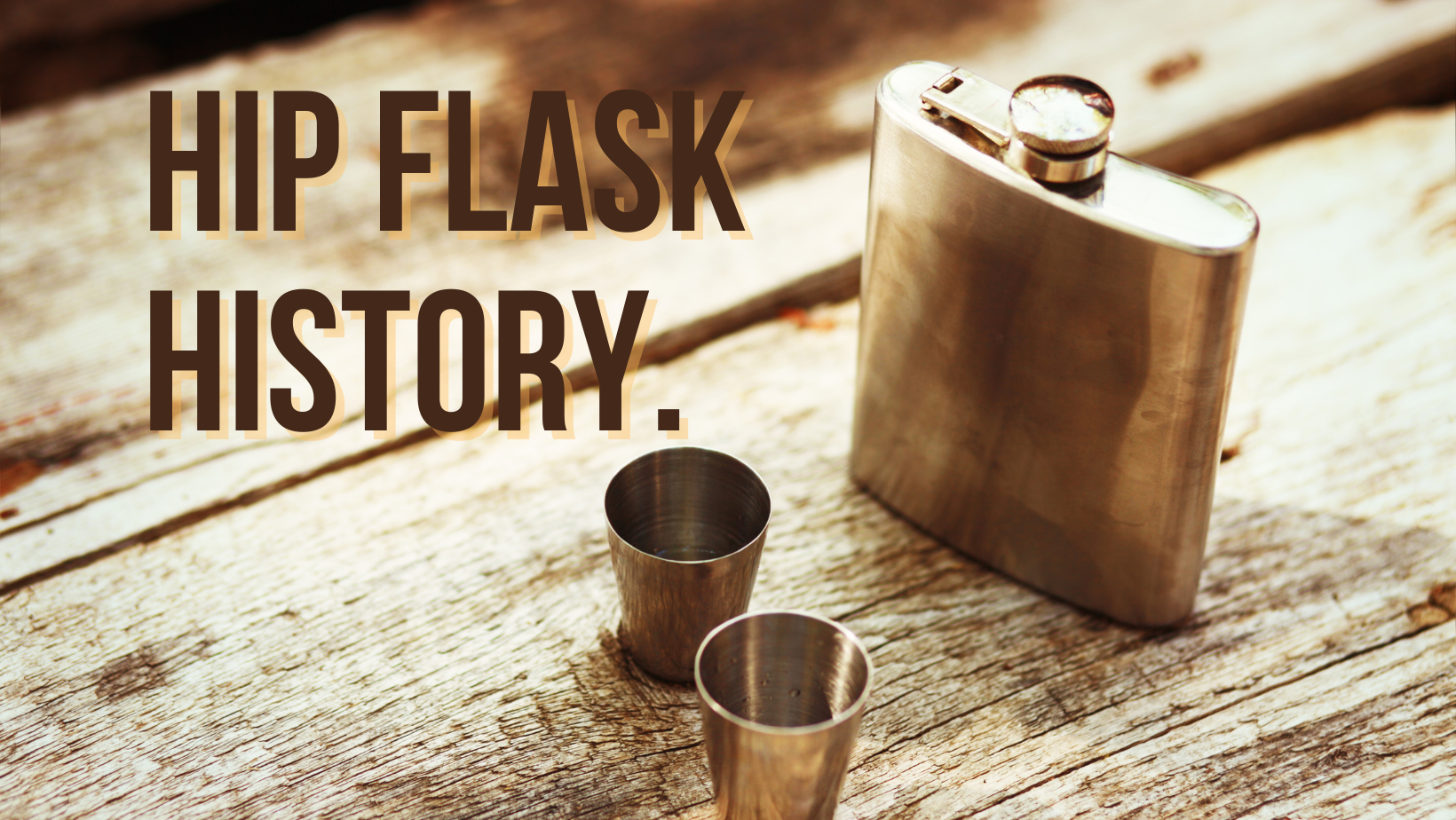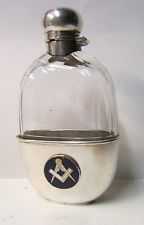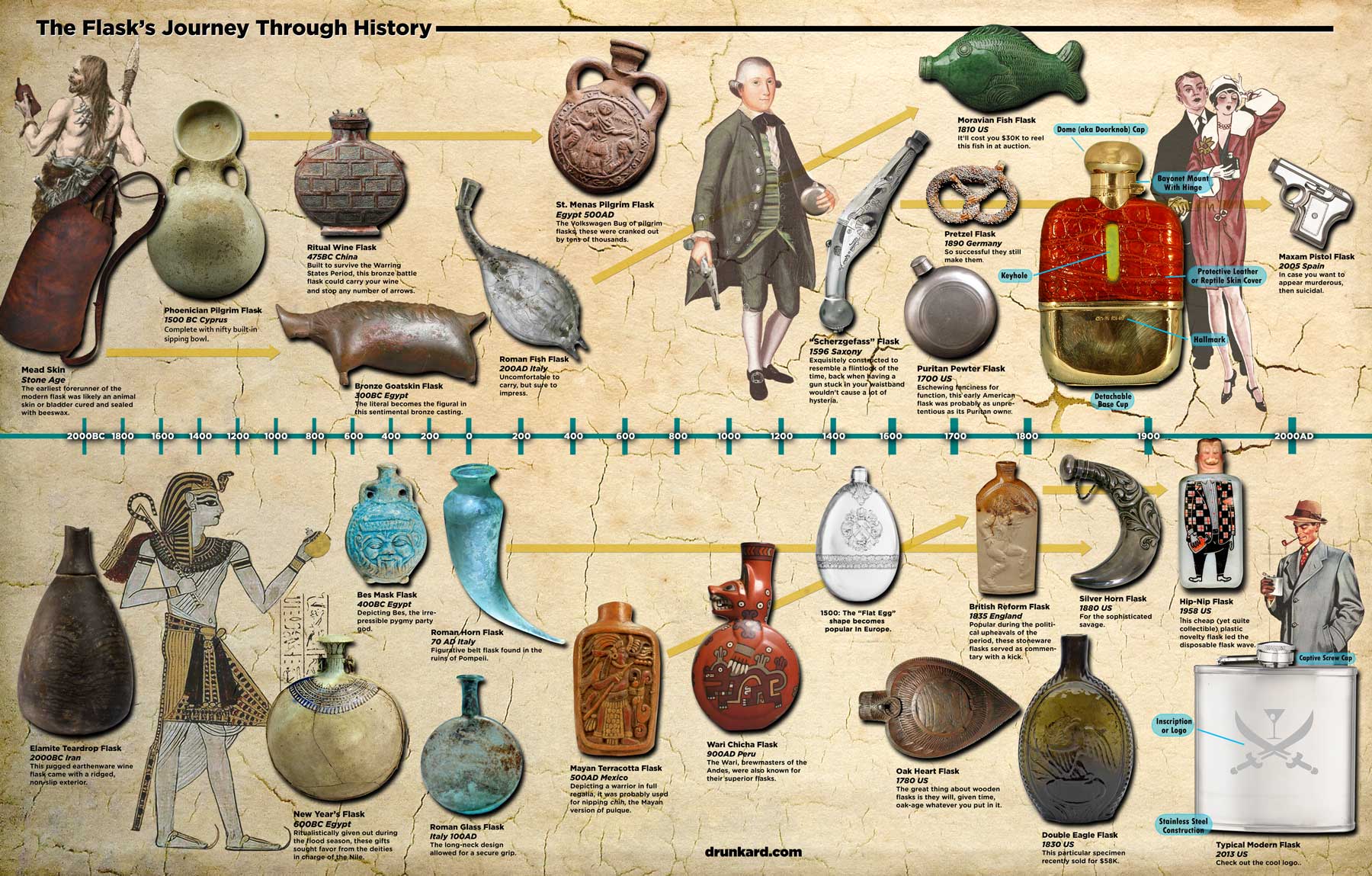I bought myself a porcelain hip flask, and it got me thinking about the history of these ingenious devices.
The flask is the descendant of the canteen and the pilgrim bottle of medieval times (associated with the pilgrimages to the holy land, it was flat on one side and round on the other with loops around the neck to allow for a strap). European travelers in the middle ages once carried hollow gourds, leather bags or animal bladders that would serve as a canteen. It’s believed that the first flasks were used by Norwegian nomads that needed to keep warm on long journeys. The hip flask, as we would recognize it today with its soft curve, was most likely designed in the early 1800s.
In the early 19th century, glass blowing techniques were being used to create individual bottles and flasks. Many of them incorporated silver or leather sheaths. Masons owned many glass production houses to supply window glass for their job sites. Many of these masons or masonic employees had glass flasks made in these glass houses etched with masonic symbols. They are very collectible today.
At the end of the century, glass production was industrialized and the flask along with it. The 19th century also saw a great many hip flasks made of pewter and silver which were found to be the least reactive with strong liquors. Many people believed that silver flasks actually improved the liquor held in them. Unfortunately, pewter often contained traces of lead which would leach into the spirit and poison its owner. (Modern pewter no longer contains lead, but be wary of antiques)
Hip flasks became most popular in the early 20th century during Prohibition. The term “bootlgging” was coined because people were sneaking flasks against their legs in their boots. The curved hip flask could be carried against a woman’s leg in her garter. Women began to join men in speakeasies and sit elbow to elbow with them for the first time. Flasks were becoming a fashionable item to own for both genders to own now. The idea of carrying your liquor discreetly had become an iconic symbol of American culture. Stainless steel was becoming a popular material in the 20th century as well.
Today, most flasks are made from stainless steel, but there are endless options to choose from. There are flasks made from plastics to avoid metal detection as well. Many states see the carrying of hip flasks as illegal because of open bottle restrictions. Manufacturers say that liquor should not be left in a flask for more than three days, though I’m sure that’s an effort to avoid any leaching of metals or toxins into your booze. (I have personally seen my whiskey turn black after too much time in a cheap stainless steel flask that I forgot about for a few months, so it is a good rule of thumb.) The best flasks are glass lined, as glass is inert and non-reactive with liquor. Stainless steel is non-reactive as well, but the surface to liquid ratio is enough to warrant drinking the contents within a week. It’s not a storage vessel, after all. The point of a hip flask is to provide you with a nip of spirits when you’re traveling. It is only a few servings of whiskey at 6-9 ounces and flask etiquette says that a nearby friend should be offered a taste. Fill, drink, empty, repeat…Enjoy!



